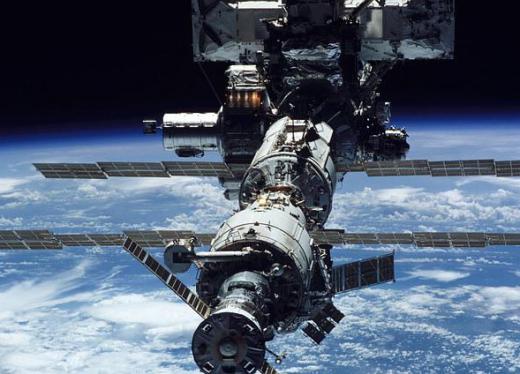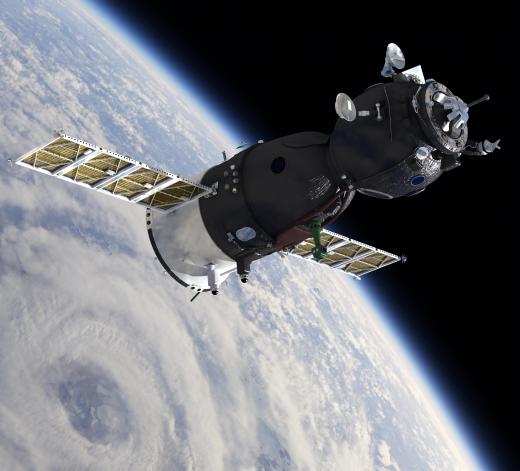What is the Difference Between Low Earth Orbit and Geosynchronous Orbit?
 Michael Anissimov
Michael Anissimov
Low earth orbit is only slightly above the Earth, by outer space standards, 124 - 1240 miles (200 - 2000 km) in altitude. Below 124 miles, orbits rapidly degrade, causing surface impact, and above 1,240 miles or even less, the Earth's radiation belts damage electronic equipment, necessitating special shielding. The region from 1,243 miles altitude to geostationary orbit (35,786 kilometers or 22,236 mi) is known as Medium Earth Orbit. Low earth orbit, medium earth orbit, and geostationary orbit are known as LEO, MEO, and GSO respectively. By comparison, the Moon orbits the Earth at an altitude of approximately 384,399 km (238,854 mi), putting GSO at about 10% of the way to the Moon. LEO is only about 1% of the way to the Moon.
The International Space Station, probably the most familiar object currently in orbit aside from the Moon, fluctuates between 320 km and 347 km above the surface of the Earth. Objects in low earth orbit revolve around the Earth frequently, with the International Space Station making about 17 orbits per day, for instance. As you move up in altitude and maintain a constant speed, the necessary distance traveled to make a complete orbit increases geometrically, and the number of orbits per day decreases.

At geosynchronous orbit, 22,000 miles or so above the Earth, satellites orbit only once per day, and as such are synchronized with the rotation speed of the Earth, hence the name. A geosynchronous orbit means that a satellite returns to the same spot in the sky at the same time each day. The path traced out by the satellite relative to the Earth's surface is that of a slanted figure-eight. This is the orbit used by many communications satellites, which are kept geosynchronous to simplify communications calculations. For instance, the GPS navigation system is operated by four satellites in geosynchronous orbit, allowing for three to be in the sky at any given time, the minimum necessary for triangulation of a ground location.

Geostationary Earth Orbit (GEO) is a special case of geosynchronous orbit where the satellites stays at an absolutely fixed point relative to the Earth's surface at all times. This must be above the equator. This is the proposed location for a space elevator, as all portions of the elevator length would need to be synchronous to prevent twisting and buckling.
Most proposals for space hotels are placed in low earth orbit. It is comfortingly close to the Earth, and also provides a better view than GSO. However, for solar power satellites, you'd want to put them in GSO, because GSO gets almost continuous sunshine, whereas LEO gets sunshine only about half the time. The sun rises and sets anywhere between every 45 minutes to every few hours from the vantage point of someone in low earth orbit.
AS FEATURED ON:
AS FEATURED ON:












Discussion Comments
@anon15234: Low earth orbit satellites are less expensive to launch than geostationary ones.
i would like to place a satellite in geostationary orbit because only three satellites at 120 degrees from each other can cover the whole earth and the calculations are easy.
the geostationary satellites are placed in the inner radiation belt so they have sunlight falling on them for 99 percent of the time so they get power easily and temperature cycles also get reduced while communication.
so we must place satellites in geostationary orbit in comparison to low earth orbit.
Why would you place a satellite in low-earth orbit vs. geosynchronous orbit? Is there a disadvantage to this?
Post your comments